deicers & ice eaters buyer guide
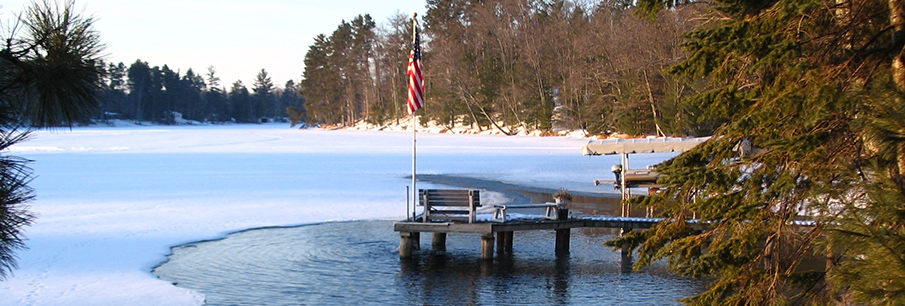
Why Do I Need a Deicer?
Without a deicer, your dock, boat, slip, or marina are vulnerable to severe damage from ice formation and expansion. Simply put, a de-icer or ice eater is your best insurance policy against costly and time-consuming repairs. Don't wait for temperatures to drop – protect your investment with a de-icer or ice eater today.
How to Deicers Work?

Deicer Applications and Benefits
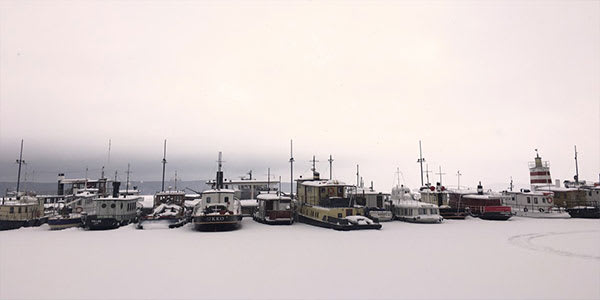
Boats, Docks, Piers and Marinas
Deicers prevent or eliminate ice formation, creating an ice-free area around your boat, slip, dock, or pier to prevent damage from ice jacking and expansion during the cold winter months.
Deicers can also protect fish and other aquatic species in your marina during the winter by creating ice-free areas for oxygen to enter into the water.
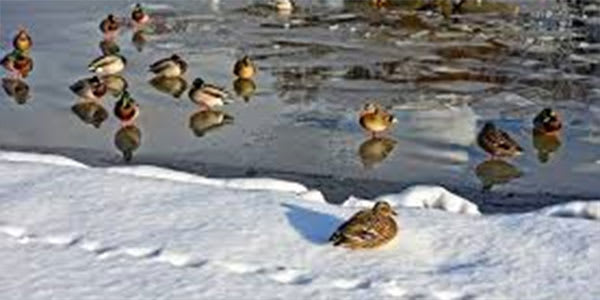
Duck Hunting
A deicer mounted on a frame specifically designed for duck ponds will quickly clear any ice and prevent its return.
By properly adjusting the de-icer, you can create water movement for realistic, life-like decoy movement to attract more waterfowl to your favorite hunting spot.
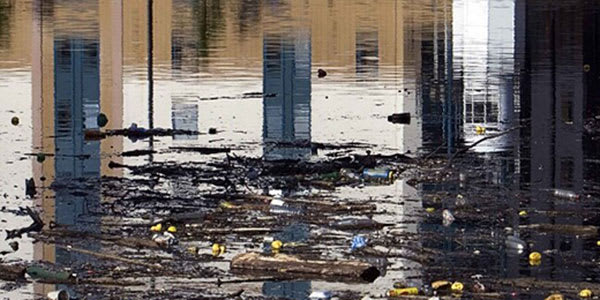
Improve Water Quality
The aeration provided by a deicer can reduce foul odors in stagnant water, encourage natural decomposition of organic matter and pollutants, and improve the overall health of fish and other organisms. De-icers can also direct water flow so debris and nuisance vegetation are funneled to one area, making trash removal simple.
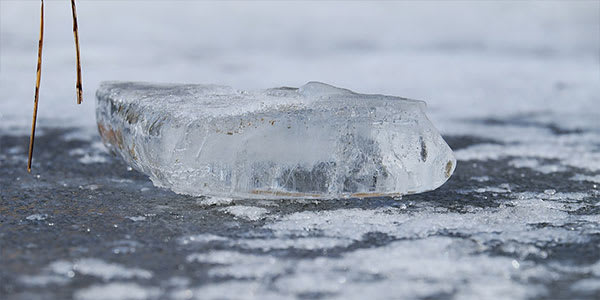
Winterkill Prevention
Heavy snow and ice limit the amount of light penetration in your pond causing plants to die, which results in decreased oxygen levels. Without oxygen, your fish will also die.
By upwelling warm, bottom water to the surface, a deicer can create an open water area in your pond to maintain safe oxygen levels and prevent a winterkill situation.
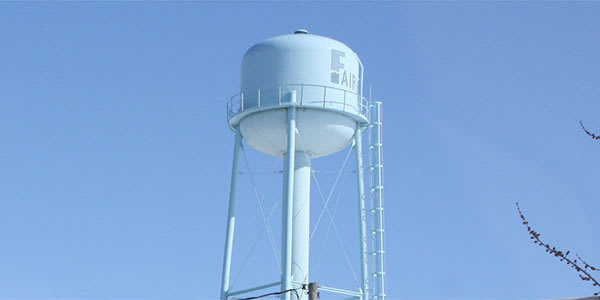
Water Towers
Protecting a water tower from costly ice damage when water demand is low and turnover rates are slow can be easy and cost-effective with a deicer.
Managing the ice in your tower will allow you to protect the coating, help prevent ice fall which can collapse the tower, and improve mixture rates for more uniform temperature and chemical profiles.
5 Things to Consider When Buying a Deicer
1. Location and Size
Geographic location and the size of the area to be cleared are very important factors in determining your deicer needs. The lower the temperatures fall over a longer period of time, the less area a single de-icer will be able to clear. So regions with typically long and extremely cold winters, like Alaska and Minnesota, will generally require a deicer with more horsepower to protect an ice-prone area. Factor in the size of the area to be cleared, and you may find that multiple deicers are necessary.
| Area Cleared by Temperature Range (Circular & Elliptical) | ||||
|---|---|---|---|---|
| Horsepower | 34º to 20º F (1.11º to -6.66º C) | 19º to 0º F (-7.22º to -17.77º C) | -1º to -20º F (-18.33º to -28.88º C) | -21º F & below (-29.44º C & below) |
| 1/4 HP | 55' diameter 25' x 90' ellipse |
40' diameter 20' x 50' ellipse |
35' diameter 20' x 40' ellipse |
25' diameter 15' x 30' ellipse |
| 1/2 HP | 65' diameter 30' x 100' ellipse |
50' diameter 25' x 60' ellipse |
45' diameter 25' x 50' ellipse |
35' diameter 20' x 40' ellipse |
| 3/4 HP | 85' diameter 35' x 120' ellipse |
70' diameter 30' x 80' ellipse |
65' diameter 30' x 75' ellipse |
45' diameter 25' x 50' ellipse |
| 1 HP | 95' diameter 40' x 150' ellipse |
80' diameter 35' x 90' ellipse |
75' diameter 35' x 85' ellipse |
55' diameter 30' x 60' ellipse |
2. Water Type
Temperature varies among different types of water. For instance, the more salt in the water, the lower the freezing point. So fewer units may be needed in sea water or brackish water applications than in fresh water. We suggest a quick online search to determine the average high and low winter temperatures for the specific body of water in which you wish to install a deicer.
3. Water Depth
Deicers work by moving warmer subsurface water up to the colder surface water. The deeper the water, the more warm water will be available to deice the area. However, if the water is too deep, the rising warmer water will not effectively spread at the surface. Likewise, mounting your de-icer in shallow waters can reduce its effectiveness due to limited availability of warm water, especially during a long winter. Warmer water is more important than surface circulation in colder climates, so you may want to consider installing your deicer or ice eater in water that is a bit deeper in these areas.
To achieve maximum performance and successful de-icing efforts, water should typically be at least 4'-6' deep for vertical installation, and slightly shallower for angled operation. For colder climates, consider installing your de-icer in water that is at least 6'-8' deep. In all cases, the deicer should be at least one foot off the bottom to prevent clogging from debris.
When dealing with tidal influences, you'll want to split the difference in water depth so the deicer is in shallow water at low tide and deep water at high tide (one option is to mount your de-icer to a boat or floating dock which will allow the deicer to rise and fall with the tide).
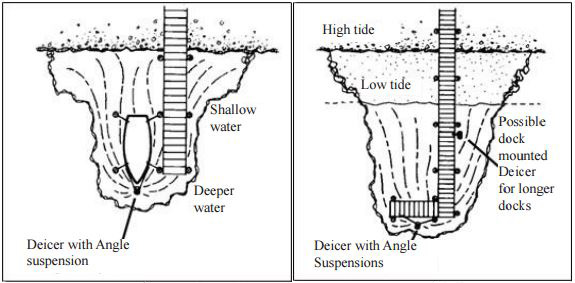
4. Power Type and Source
Also, consider the distance between the outlet and the location where the deicer will be used. It's important to order a deicer or ice eater with a power cord that is long enough to reach your deicer directly from the outlet without need for an extension cord. Voltage is naturally lost as electricity travels through a power cord, so any additional connections, such as an extension cord, will result in an even greater loss of voltage. This can result in reduced efficiency of your de-icer and may damage the unit.
Kasco Deicers are available with cord lengths up to 100’ and Power House Ice Eaters offer cord lengths up to 200’.
5. Obstructions
Objects in the water (i.e. boat hulls, dock floats, pilings, etc.) can obstruct, restrict, or re-route the warm water flow created by a deicer, limiting the effectiveness of the unit. The more objects in the area, the greater the potential for obstruction. In some cases, you may need multiple deicers to ensure continuous water movement in the area you’re trying to keep clear of ice. In all cases, the units will need to be mounted in the proper location and positioned appropriately for maximum performance.
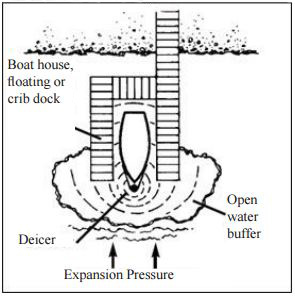
Comparing Deicer Brands
| Kasco De-Icer Quick Comparison Guide | |||||
|---|---|---|---|---|---|
| Kasco De-Icer Model | Motor | Voltage | Running Amps | Thrust | Typical Cleared Area* |
| 2400D | 1/2 HP | 120V | 5.7 | 29 lbs. | Up to 50' Diameter |
| 3400D | 3/4 HP | 120V | 7 | 36 lbs. | Up to 75' Diameter |
| 3400HD | 3/4 HP | 240V | 3.5 | 36 lbs. | Up to 75' Diameter |
| 4400D | 1 HP | 120V | 9.1 | 41 lbs. | Up to 90' Diameter |
| 4400HD | 1 HP | 240V | 4.5 | 41 lbs. | Up to 90' Diameter |
| *Cleared area based on normal winter conditions. Extreme conditions may cause a smaller open diameter. | |||||
| Power House Ice Eater Quick Comparison Guide | |||||
|---|---|---|---|---|---|
| Ice Eater Model | Motor | Voltage | Running Amps | Thrust | Typical Cleared Area* |
| P250 | 1/4 HP | 115V | 2.5 | 20 lbs. | 20' to 25' Diameter |
| 230V | 1.25 | ||||
| P500 | 1/2 HP | 115V | 5.0 | 28 lbs. | Up to 40' Diameter |
| 230V | 2.5 | ||||
| P750 | 3/4 HP | 115V | 4.7 | 32 lbs. | Up to 60' Diameter |
| 230V | 2.35 | ||||
| P1000 | 1 HP | 115V | 7 | 36 lbs. | Up to 80' Diameter |
| 230V | 3.5 | ||||
| *Cleared area based on normal winter conditions. Extreme conditions may cause a smaller open diameter. | |||||
Mounting Your Deicer
Circular or Elliptical De-icing Patterns
Deicers can be mounted to clear various diameters and either a circular or oval shaped area.
- To clear ice in a circular pattern, mount your deicer vertically.
- To clear ice in an elliptical pattern, mount your deicer at an angle.

Deicer Mounting Tips
- Mount your deicer 3 to 5 feet below the water surface and at least 1 foot above the floor of the water. If too close to the floor, debris can be pulled in to the unit, damaging the motor and/or propeller.
- Keep deicer submerged during use at all times. If operated in open air, it will quickly overheat and destroy the motor.
- For areas with varying water levels, mount de-icer to adjust with the water level, maintaining proper depth below the surface (3' to 5') and height above the bottom (1' minimum).
- For shallow water, make sure the deicer is not in a water zone that will freeze solid. If ice reaches the bottom, it will choke off the water supply to the deicer, causing serious damage to the motor.
- Always use a Ground Fault Interrupter (GFI) power source and check the GFI on a regular basis. A GFI is an outlet that senses current flow problems and automatically shuts off in those instances to maintain safe conditions.
Kasco Deicer Mounting Options
| Rope Suspension | Dock Mount | Float Mount |
|---|---|---|
 |
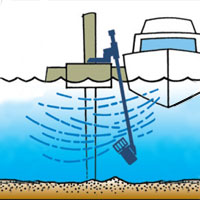 |
 |
| Each deicer unit ships with two suspension ropes to be spread at least 8' to 10' apart | The Kasco Dock Mount secures your deicer to a dock or pilings; can be extended to a maximum of 10' from the mounting bracket | The Kasco Float Mount allows your de-icer to be used in shallow waters or where water level fluctuates; deicer floats and moves with water |
Power House Ice Eater Mounting Options
| Rope Suspension | Dock Mount | Shallow Water Stand |
|---|---|---|
 |
 |
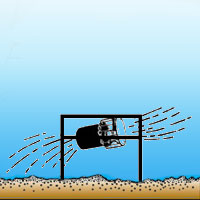 |
| Each ice eater unit ships with two suspension ropes to be spread at least 8' to 10' apart | The Ice Eater Dock Mount secures your ice eater to a dock or pilings; can be extended to a maximum of 6' from the mounting bracket | The Shallow Water Stand allows your ice eater to be used in shallow waters and can be positioned horizontally or at an angle; ideal for duck hunting and fishing |
Deicer Accessories

Important: The C-10 is designed to operate only one Kasco Deicer. Daily observation is required for all de-icing installations. Any electrical equipment should be plugged into a GFCI-protected outlet or circuit for safety, especially in water. It is never a good idea to be in the water with electrical equipment in operation or even plugged in. Also, make sure to test the GFCI breaker in the circuit once a month to ensure proper operation.
Kasco Thermostat Installation Instruction
Deicer Maintenance Tips
While deicers require little maintenance, it is important to inspect your Kasco deicer or Power House Ice Eater on a regular basis to ensure it continues operating at peak performance. These maintenance tips are for general informational purposes only, and are not brand specific. You should always consult your owner’s manual and follow the manufacturer’s recommendations for your specific brand and model.
✔ The RCD (Residual Current Device) or GFCI (ground fault circuit interrupter) will alert you to electrical leaks in your deicer. Test the RCD or GFCI upon installation and reinstallation, as well as monthly to ensure proper operation. If you have repeat, consistent trips on your ground fault, disconnect your deicer from the power source, remove it from the water, and inspect the unit and power cord for visible damage. Contact the manufacturer for further instructions or order replacement parts online from SavvyBoater.
✔ Inspect the zinc anode every 2-3 months for deterioration and/or corrosion, and replace it if reduced to half its original size or if it turns white. Since the zinc anode protects the deicer from corrosion and electrolysis, failure to operate the unit with zinc could result in metal deterioration and contamination, and may void your warranty.
✔ Remove the de-icer or ice eater from the water and clean its exterior with a power washer at least once per year. It is especially important to clean any build up (calcium, algae, etc.) from the stainless steel motor housing, as this can become an insulator that blocks heat transfer (the motor housing dissipates heat into the water).
✔ Deicers and ice eaters should be removed from the water, cleaned, and stored prop side down (upside down) in a cool place during the off season. Storing prop side down will keep the seals lubricated.
✔ Seals can wear out just like brake pads on a car. Replacing the seals and oil every few years can extend the life of your deicer. Check the manufacturer’s recommendations for the replacement schedule.
✔ Have your unit serviced by the manufacturer or an authorized repair service every three to four years (depending on the manufacturer’s recommendations).



